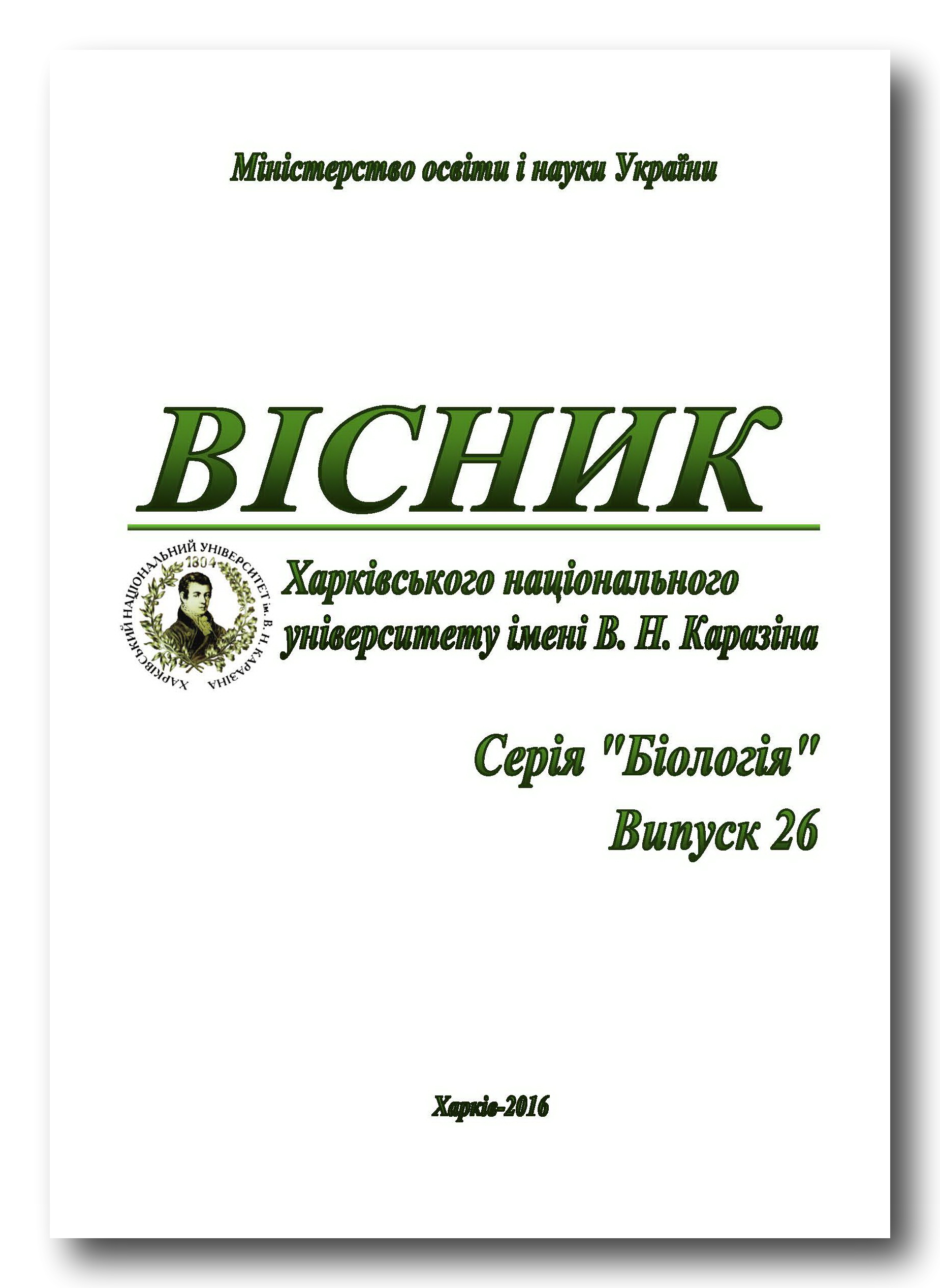In silico analysis of heme binding effect on the formation of mouse arginyl-tRNA-protein transferase 1 and protein LIAT1 complex
Abstract
Ab initio prediction of mouse arginyl-tRNA-protein transferase 1 (R-transferase, EC 2.3.2.8) and protein LIAT1 structures was performed by I-Tasser server. Molecular docking studies of the protein models revealed that potential heme binding sites didn’t coincide with the sites of interaction with protein partner in both R-transferase and LIAT1 protein. Heme docking to the complex of two proteins showed LIAT1 protein to provide more preferable sites for heme binding than R-transferase. Heme attachment to the cavities in the core of R-transferase involved in catalysis and the alterations of LIAT1 protein conformation could be the additional mechanisms of heme inhibiting action on protein arginylation.
Downloads
References
Brower C.S., Rosen C.E., Jones R.H. et al. Liat1, an arginyltransferase-binding protein whose evolution among primates involved changes in the numbers of its 10-residue repeats // PNAS. – 2014. – Vol.111, no 46. – P. 4936–4945.
Hu R.G., Sheng J., Qi X. et al. The N-end rule pathway as a nitric oxide sensor controlling the levels of multiple regulators // Nature. – 2005. – Vol.437, no 7061. – P. 981–986.
Hu R.G., Wang H., Xia Z., Varshavsky A. The N-end rule pathway is a sensor of heme // PNAS. – 2008. – Vol.105, no 1. – P. 76–81.
Lee M.J., Kim D.E., Zakrzewska A. et al. Characterization of arginylation branch of N-end rule pathway in G-protein-mediated proliferation and signaling of cardiomyocytes // J. Biol. Chem. – 2012. – Vol.287, no 28. – P. 24043–24052.
Pierce B.G., Wiehe K., Hwang H. et al. ZDOCK server: interactive docking prediction of protein-protein complexes and symmetric multimers // Bioinformatics. – 2014. – Vol.30, no 12. – P. 1771–1773.
Rai R., Mushegian A., Makarova K., Kashina A. Molecular dissection of arginyltransferases guided by similarity to bacterial peptidoglycan synthases // EMBO Rep. – 2006. – Vol.7, no 8. – P. 800–805.
Schneidman-Duhovny D., Inbar Y., Nussinov R., Wolfson H.J. PatchDock and SymmDock: servers for rigid and symmetric docking // Nucl. Acids. Res. – 2005. – Vol.33. – P. W363–W367.
Varshavsky A. The N-end rule pathway and regulation by proteolysis // Protein Sci. – 2011. – Vol.20. – P. 1298–1345.
Yang J., Yan R., Roy A. et al. The I-TASSER Suite: protein structure and function prediction // Nature Methods. – 2015. – Vol.12. – P. 7–8.
Zhang L., Guarente L. Heme binds to a short sequence that serves a regulatory function in diverse proteins // EMBO J. – 1995. – Vol.14. – P. 313–320
Authors retain copyright of their work and grant the journal the right of its first publication under the terms of the Creative Commons Attribution License 4.0 International (CC BY 4.0), that allows others to share the work with an acknowledgement of the work's authorship.




